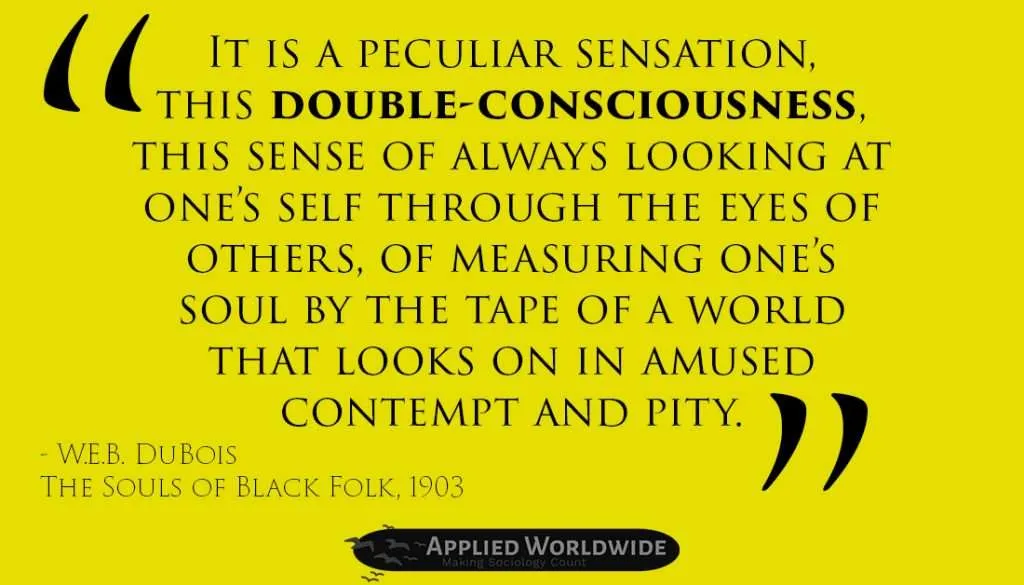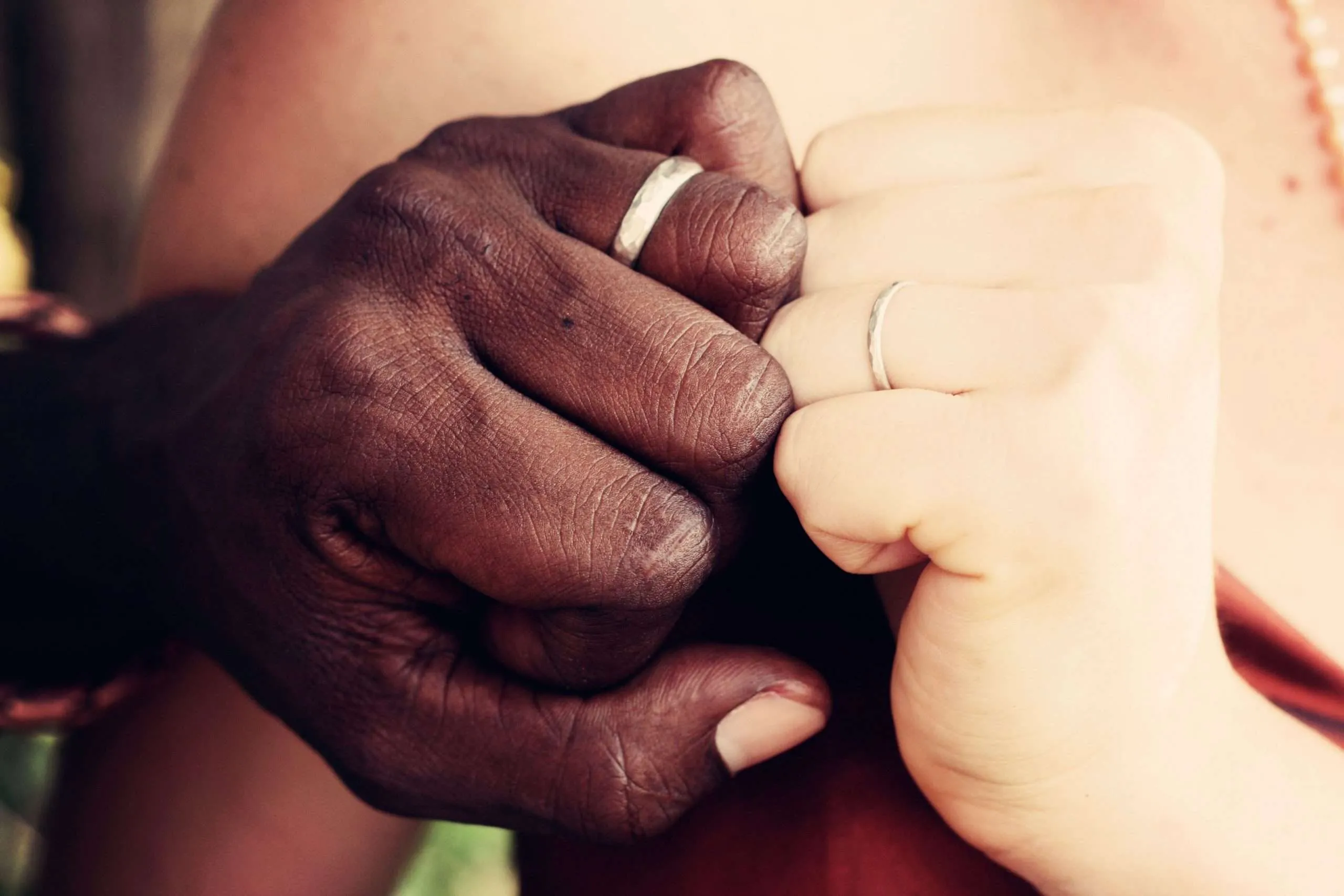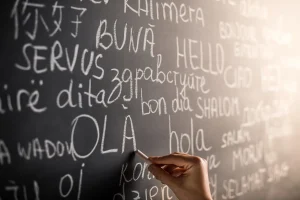In recent years, code switching has increasingly become a topic of interest, being portrayed in the media, described by celebrities, and experienced by countless individuals. Yet the term is often understood at a basic level, without an understanding of its intellectual foundations or the ways in which it can be used to facilitate positive change. In the following article, connections will be drawn between code switching and W.E.B. DuBois’ sociological legacy, including the idea of double consciousness. In addition, the idea of code switching will be applied to interracial relationships, with the goal of understanding how positive interactions and meaningful relationships can further social change.
The Legacy of W.E.B. DuBois
W.E.B DuBois was a brilliant academic, a prolific writer, and a prominent advocate for civil rights. He was the first Black sociologist to be included in the canon of sociological theory, and his ideas remain relevant today. DuBois wrote extensively about the experience of Black Americans and their position in society relative to white Americans. He conceptualized the white and Black worlds as being entirely separate and largely hidden from each other.
DuBois’ writing gives the impression that he had little hope of reconciling the two worlds; he spent years entreating white people to see and treat Black people like human beings. By the end of his life, he resorted to the belief that white Americans had no consciousness and were essentially blind to the realities of the racist system they had built (See The Souls of White Folk).
Since DuBois’ time, America has made great progress. The country is by no means free of the influence of racism, nor has it done the necessary work to undo the centuries of violence and disadvantage Black Americans have been subjected to. But the nation is not without hope.
History of Interracial Marriage
There is one phenomenon in particular that DuBois may never have predicted but gives individuals an intensely unique peek into a racial world beyond their own: interracial relationships. Although these surely existed in secrecy during DuBois time, they were not legalized until 1967, four years after his death. Prior to the Loving v. Virginia Supreme Court case, laws forbidding interracial marriage (called anti-miscegenation laws) treated the practice as negatively as incest or polygamy.
Although it has been little more than 50 years since the practice was legalized, interracial marriages are one of the most rapidly growing family forms in the United States. According to the Pew Research Center, 17% of—or one in six—newlyweds are married to someone of a different race or ethnicity. For non-recently married people, the number is one in ten. 18% of Black newlyweds and 11% of white newlyweds marry outside of their own racial group. It is relationships between these two groups that coincide especially well with DuBois’ theories.
Sociological Insight on Interracial Relationships
Black-white interracial relationships provide a micro-interactional scale on which to examine how Black and white individuals conceptualize and communicate ideas of race. According to DuBois, there exists a veil between the races, making it difficult for either side to see the other clearly. Interracial relationships may offer a way to lift the veil—or at least thin it. The Black partner may (but is in no way required to) help lift the veil for their partner, so that they may see into their world.
By listening to their partner’s experiences, being present in moments when their partner experiences racism, or spending time with their partner’s friends and family, a white individual may unlearn some of the unconscious stereotypes and biases they have learned from a racist society. The white partner may in turn be able to help lift the veil for their partner, so that they may see themselves for their individual traits and merits, rather than just as a member of their racial group as perceived by society.
Double Consciousness and Interracial Relationships
Interracial relationships are not without their challenges, however. One of DuBois greatest contributions to the sociology of race is his idea of double consciousness. He theorized that Black Americans had to develop double consciousness to successfully navigate between the two separate world of whiteness and Blackness. In order to blend into a majority-white culture, Black people must see themselves through the eyes of white people; in order to maintain ties to their own minority culture, they must see themselves through the eyes of Black people.
DuBois described this as “two souls, two thoughts, two unreconciled strivings; two warring ideals in one dark body” (The Souls of Black Folk) and used it to describe broad social patterns. Yet double consciousness is apparent in individual interactions too, including those with an intimate partner.

In the case of an interracial relationship, a Black individual might also experience double consciousness by seeing themselves through the eyes of their partner, and thus feel pressure to become a more desirable version of themselves. One strategy frequently employed to do so is code-switching, defined as “adjusting one’s style of speech, appearance, behavior, and expression in ways that will optimize the comfort of others in exchange for fair treatment, quality service, and employment opportunities.”
In relationships, this may involve avoiding the use of AAVE, hiding one’s natural hair, changing one’s style of dress, or otherwise toning down one’s Blackness to present a version of oneself that one thinks their partner likes better. This happens even when a white partner has never been explicitly racist or said anything to make their Black partner suspect that they need to code-switch.
Final Thoughts of Code Switching and Race
Code-switching is a coping mechanism developed in response to a racist society, not in response to one’s partner. Thus, there is a way it can be turned off, at least in the context of one specific relationship. With communication and compassion, partners in virtually any relationship can learn to be fully vulnerable and unapologetically genuine with each other. With interracial relationships, there is an additional layer of complexity, but this is not an impossible challenge. Lifting the veil and reducing the need for double consciousness—even just on an individual level—are a step in the right direction toward building a society free from racism.
Hate is a Virus: Anti-Asian Racism During COVID-19







